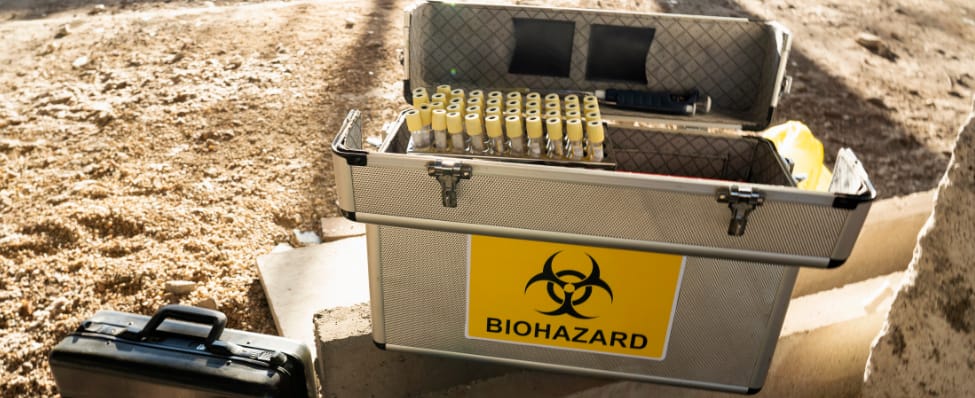
RoHS Compliance Expertise
Assess and address your RoHS obligations for Electrical and Electronic Equipment (EEE)
-
Regulatory
ExpertiseTrack global RoHS regulations and assess your product portfolio to determine if RoHS applies to your products in any of the relevant jurisdictions.
-
Tailored
SupportSupport the development of a Due Diligence program and assist supply-chain communication to collect RoHS compliance information for Technical Documentation.
-
Comprehensive
SupportWork with established software solutions to review your product portfolio regularly and report any required updates under the evolving RoHS scope and exemptions.

Are your products RoHS Compliant?
H2 Compliance navigates RoHS requirements, assessing your products and identifying any compliance gaps.
-
RoHS Directive
- Companies placing Electrical or Electronic Equipment (EEE) on the EU market must comply with RoHS Directive 2011/65/EU, ensuring products do not contain specific hazardous substances above set limits.
-
Scope
- EU RoHS applies to manufacturers across the entire supply chain of electrical and electronic equipment in eleven product categories, ranging from household appliances to medical devices and industrial instruments.
- Restricted substances include cadmium, lead, mercury, hexavalent chromium, and several phthalates, all with maximum concentrations of <0.1% (except cadmium, which is <0.01%).
-
Requirements
- Manufacturers must ensure compliance with RoHS by preparing a Declaration of Conformity and providing technical documentation, while EEE that meets the standards must bear the CE mark. Exemptions to the restrictions may apply and are periodically reviewed, and authorities may conduct market surveillance to ensure compliance, taking corrective actions on non-compliant products.

Our RoHS Compliance Solutions
Supply Chain Communication
Continual Support
Meet Our Restriction of Hazardous Substances Expert
Dedicated professionals guiding your compliance journey.

Jim Mo |MS. ChemE, CPPS|
Frequently Asked Questions
RoHS stands for Restriction of Hazardous Substances and it is also the acronym of an EU Directive that impacts the entire electronics industry. The EU Directive 2002/95/EC (EU RoHS 1) was introduced in 2002 and became effective in 2006 to restrict the use of six hazardous substances found in the electrical and electronic equipment (EEE). The regulation was recast by Directive 2011/65/EU, also known as EU RoHS 2, to include a CE-Marking Directive and compliance recordkeeping requirements. Amended by 2015/863/EU in 2015, the Directive became EU RoHS 3 to restrict ten groups of hazardous substances in EEE. Typically, the hazardous substances listed in RoHS are restricted at the maximum allowed level in each homogeneous material in a product. The restricted substances and their maximum allowed limits are:
Lead (Pb) < 0.1% (1000 ppm)
Mercury (Hg) < 0.1% (1000 ppm)
Cadmium (Cd) < 0.01% (100 ppm)
Hexavalent Chromium (Cr6+) < 0.1% (1000 ppm)
Polybrominated Biphenyls (PBBs) < 0.1% (1000 ppm)
Polybrominated Diphenyl Ethers (PBDEs) < 0.1% (1000 ppm)
Bis(2-ethylhexyl) phthalate (DEHP) < 0.1% (1000 ppm)
Butyl benzyl phthalate (BBP) < 0.1% (1000 ppm)
Dibutyl phthalate (DBP) < 0.1% (1000 ppm)
Diisobutyl phthalate (DIBP) < 0.1% (1000 ppm)
EU RoHS applies to all electrical and electronic equipment manufacturers throughout the supply chains of eleven product categories:
- Large household appliances.
- Small household appliances.
- IT and telecommunications equipment.
- Consumer equipment.
- Lighting equipment.
- Electrical and electronic tools.
- Toys, leisure, and sports equipment.
- Medical devices.
- Monitoring and control instruments (including industrial ones).
- Automatic dispensers.
- Other EEE not covered by any of the categories above.
Manufacturers, distributors, retailers, and brand owners of the above EEE have various obligations under EU RoHS. Although there are exemptions applicable to certain materials and applications, the exemptions must be valid when the products are placed on the market and the information must be communicated to down-stream users.
With the EU increasingly emphasizing consumer product safety by imposing regulations such as EU GPSR, the EU RoHS will only become more and more important as a harmonised standard and regulatory requirement for EEE. EEE industries recognize compliance with RoHS as one of the criteria to achieve corporate and supply chain sustainability. Therefore, securing RoHS compliance is not just about meeting legal requirements—it is about protecting a company’s brand, ensuring product safety, and maintaining access to global markets.
Manufacturers of EEE must establish a due diligence program to obtain supplier materials declarations to ensure their products comply with RoHS through proper documentation, including:
- Technical File: Includes test reports or material declarations, and conformity assessments.
- Declaration of Conformity (DoC): It is a self-issued formal statement issued by a manufacturer, declaring to its customer that their product complies with the RoHS regulations by meeting the restrictions on hazardous substances allowed in electrical and electronic equipment or any valid exemptions. The DoC should include details about the product, manufacturer, and the specific RoHS requirements met.
- CE Marking: Products within the EU must bear the CE mark, indicating compliance with RoHS.
There are other RoHS-like regulations in the countries and regions worldwide. They are like EU RoHS, imposing restrictions on EEE for a similar list of substances and maximum allowed levels, but they may have different granular compliance criteria and difference compliance practices. Some, but not all of them are listed below:
- UK RoHS – almost identical to EU RoHS post-Brexit but may diverge on exemptions validities. Although a deadline of December 31, 2024, was announced for companies to adopt the “UKCA” marking, a UK version of CE Marking, the UK has updated the requirement in February 2024 that the UK will indefinitely accept either CE Marking or UKCA Marking on the market.
- China RoHS – China RoHS takes a two-phase approach for companies to comply with its labelling and conformity assessment requirements. Effective January 1, 2026, China will restrict four more substances, making a list of ten substances, resembling EU RoHS.
- US state-level RoHS – Some US states have RoHS criteria embedded in their E-waste or recycling regulations, such as California, New Jersey, Illinois, Indiana, Minnesota, Rhode Island, and Wisconsin.
- J-MOSS (Japan) – Japan has a different marking system to indicate compliance with RoHS-like requirements.
- UAE RoHS – companies must obtain a Certificate of Conformity under the Emirates Conformity Assessment Scheme (ECAS) or the Emirates Quality Mark (EQM) scheme, before placing products on the UAE market.
